 For decades, Mexico manufacturing has been viewed as a strategic advantage for U.S. companies that want to operate closer to home. Though, in recent years, there’s been a significant shift from manufacturing in China to nearshoring to Mexico as a key strategy.
For decades, Mexico manufacturing has been viewed as a strategic advantage for U.S. companies that want to operate closer to home. Though, in recent years, there’s been a significant shift from manufacturing in China to nearshoring to Mexico as a key strategy.
With a history of industrial success due to built-in benefits unavailable overseas, this move is highly advantageous for several reasons. From infrastructure to the IMMEX maquiladora program, here are five areas companies can benefit from most when manufacturing in Mexico.
Due to Mexico’s extensive history in manufacturing, there are stable networks in place that extend throughout the country as well as into the U.S. Global companies with established operations have continued their investment over the years as their respective industries have grown and evolved. The U.S. is the highest source of foreign direct investment (FDI) into Mexico, totaling $5.04 billion USD or 42.5% of the FDI total in 2021, a majority of which funnels through the industrial sector.
With operating activity in an array of specialized industries, there’s also a strong supply chain to count on in Mexico, which has been one of the greatest advantages in recent years. Whereas, China has experienced delays, a weakened supply chain, and other challenges that have negatively impacted production. Manufacturers want a strategy with built-in stability to help protect the future of their operations. The benefit of a dependable infrastructure puts the spotlight on Mexico manufacturing as the most viable option.
Mexico is part of 13 free trade agreements with 50 countries. This includes the USMCA, which has strengthened the trade relationship between the U.S., Mexico, and Canada. The updated provisions eliminate barriers to trade among these three countries and deliver new incentives for U.S. manufacturers operating in Mexico. In comparison, the U.S. trade war with China has resulted in retaliatory tariffs that hindered the exchange between the two countries and caused manufacturers to reconsider their sole reliance on China for production.
Furthermore, the USMCA implements robust intellectual property (IP) laws and regulations with enforced penalties for those in violation. In today’s modern world, where new patents continually enter the market, IP protection is crucial among global companies and has been a notorious source of contention between the U.S. and China in the past.
Inflation has led to rising costs in nearly all areas of operation, which makes the cost-savings benefits of manufacturing in Mexico an even greater strategic advantage. For U.S. manufacturers, specifically, the close proximity between the U.S. and Mexico cuts down dramatically on transportation costs and delivery timelines.
Currently, a shipment from China to the U.S. costs upwards of $10K to $15K and takes several weeks to arrive. Alternatively, finished goods can often reach their U.S. destination from Mexico on the same day for a few hundred dollars. Furthermore, quality assurance oversight is easier to maintain with the shorter travel distance between the two countries versus a U.S. manufacturer scheduling a factory visit in Asia.
Another main reason why U.S. companies are turning to Mexico manufacturing in 2022 is the scarcity of the industrial workforce in the U.S. and China. Many companies have struggled to find reliable, industrially skilled employees to carry out operations. The exodus of industrial workers has been provoked by a combination of those seeking other employment opportunities and the retirement of industrial workers who have served in the manufacturing sector for decades.
In addition, both the U.S. and China have also experienced increases in the minimum wage, making the cost-effectiveness less enticing than foreign manufacturers recruiting employees in Mexico. Mexico continues to invest in the education and training of its industrial workers and has developed a highly competitive workforce in accordance with cost-effective labor rates. For example, the hourly rate for a skilled operator in Mexico is $5.31 versus the $15 minimum wage in the U.S.
Lastly, two unique benefits of Mexico manufacturing are the shelter setup and the IMMEX program, which work together hand-in-hand. A shelter reduces the risk and liability for foreign manufacturers operating in Mexico by serving as their legal entity. A shelter company also takes care of all administrative tasks necessary to set up operations. It allows companies to get up and running in as little as three to four months, compared to six or seven months as a standalone entity. Meanwhile, companies maintain complete control of production and ownership of goods, equipment, and materials.
Working under a shelter also grants foreign companies benefits as part of the IMMEX maquiladora program. The IMMEX maquiladora program allows foreign manufacturers to temporarily import manufacturing materials and exempt them from the 16% VAT, as long as the finished goods are exported within the established timeframe.
This cost-savings benefit begins from the first day of operations when working with a shelter, as all necessary certifications and permits are already in place. However, for U.S. and other foreign companies establishing their own standalone entity, the application and approval process can take months, and all materials and equipment will be taxed accordingly.
U.S. and other foreign manufacturers have benefited from Mexico manufacturing for years, and it’s a strategy that still holds steady today. IVEMSA has successfully helped manufacturers set up their operations since 1982 and maintains a 15-year average customer retention rate.
Source:
https://mexico-now.com/prospects-for-foreign-direct-investment-in-mexico-2021/
The stability of the global supply chain hangs as a question in everyone’s mind. While the pandemic is what initially sparked a series of delays and stunted foreign operations, manufacturers are still reeling from residual challenges two years later. Companies face shipping container, component, and labor shortages as the demand for durable goods is on the rise, all of which is putting a heavy strain on the supply chain.
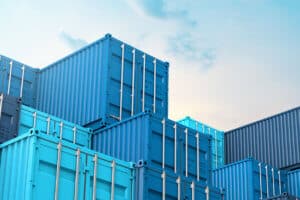 However, on the other side of this growing problem is the chance to implement new solutions. For many, that involves manufacturing in Mexico. Though China has been the long-standing solution when seeking a cheaper way to operate, it’s also been the source of many significant problems. Although, Mexico has always been right on its heels, many times surpassing China as the preferred operational location.
However, on the other side of this growing problem is the chance to implement new solutions. For many, that involves manufacturing in Mexico. Though China has been the long-standing solution when seeking a cheaper way to operate, it’s also been the source of many significant problems. Although, Mexico has always been right on its heels, many times surpassing China as the preferred operational location.
Due to the close proximity with the U.S., manufacturing in Mexico feels more like a domestic purchase compared to dealing with the costs and timelines of typical international shipping. For example, if there are supplies or products not available in one of Mexico’s border towns, like Tijuana or Jaurez, they can easily be sourced from their neighboring counterparts in California or Texas, respectively.
For every dollar produced in Mexico, there’s a U.S. component as well, which strengthens the supply chain integration between the two countries and creates greater logistical advantages compared to manufacturing in China, such as:
There is convenience, efficiency, and cost savings for U.S. manufacturers that choose to operate in Mexico. However, Mexico manufacturing is not a new strategy. It has served as a central operational hub for foreign companies for decades due to its established infrastructure, competitive workforce, and cost-effective benefits.
As a result of this consistency, it has nurtured a growing supply chain. There is a diverse array of suppliers across various industries continually expanding their product lines. Third-party service providers also continue to expand as manufacturers seek new opportunities. Meanwhile, this growth and success decrease the reliance on China.
Even prior to the pandemic, the U.S. continuously struggled with its manufacturing relationship with China, due to retaliatory tariffs, lack of intellectual property protection, and an aging workforce at a higher cost. Whereas, U.S. companies have benefited from manufacturing in Mexico for years, and the strengthening ties between the two countries offer the additional advantage of supply chain stability.
Conducting operations closer to home in Mexico provides greater efficiencies and specific competitive advantages for U.S. manufacturers, one of which is working with a shelter company. A shelter company takes care of all administrative responsibilities necessary to seamlessly set up new operations. This includes customs compliance, legal and tax regulations, as well as HR and accounting services, which allows manufacturers to concentrate on day-to-day production.
Those who partner with a shelter company like IVEMSA benefit from a team with years of experience, knowledge, and expertise to get a foreign operation up and running in as little as three to four months with virtually no legal risk. Furthermore, operating under a shelter equals significant savings on labor, infrastructure, permits, and license fees. It provides all of the advantages with none of the hassle.
 Electronics manufacturing has been one of the strongest industries in Mexico with a significant increase in foreign direct investment over the years. Global electronics manufacturers such as Foxconn, LG, and Samsung all rely on manufacturing in Mexico for the production of everything from smart TVs to circuit boards and computers to communication equipment. Due to the history of success of global companies operating in Mexico, it continues to be an ideal setup for those considering expansion.
Electronics manufacturing has been one of the strongest industries in Mexico with a significant increase in foreign direct investment over the years. Global electronics manufacturers such as Foxconn, LG, and Samsung all rely on manufacturing in Mexico for the production of everything from smart TVs to circuit boards and computers to communication equipment. Due to the history of success of global companies operating in Mexico, it continues to be an ideal setup for those considering expansion.
The draw of cheap labor was once the main allure of China’s manufacturing. However, industrial labor costs in Mexico are now lower than both China and the U.S., and there are others areas where China simply cannot compete. Although many U.S. manufacturers have relied on China for decades, many are reconsidering the close proximity to Mexico, intellectual property protection under the USMCA, and lower production costs as main reasons to invest in Mexico instead. Here’s a closer look at what these benefits offer.
The U.S. has one of the largest consumer markets in the world, and expanding operations to Mexico makes more operational sense than contending with the long distance to China. With complex, long-distance supply chains, there is a greater likelihood of delays or problems, which does not allow manufacturers to scale or deliver to market in a competitive way.
Conversely, the close proximity between the U.S. and Mexico reduces transportation timelines and costs while increasing the level of quality assurance available. In many cases, U.S. manufacturers work in the same time zone as Mexico and can also receive shipments on the same day.
Intellectual property protection is often a challenge when manufacturing in China. With rapidly advancing technology and a highly competitive marketplace, it’s essential for electronics manufacturers to preserve high standards of protection and enforcement.
U.S. and Canadian companies manufacturing in Mexico are protected by the provisions set forth by the USMCA. Among the updates to the established rules include full national treatment for copyright and related rights, a minimum of 15-year protection for industrial designs, and the establishment of appropriate copyright safe harbors to deter online piracy, among others. Manufacturers are seeking a sense of stability in a time of uncertainty and this advanced security helps meet those needs.
Mexico invests heavily in the manufacturing sector with more engineering graduates per capita than the U.S. Additionally, Mexico offers training programs that provide students the skills and experience they need to enter the industrial workforce and support foreign operators. This is in addition to the number of young, capable workers available compared to other markets, including the U.S., which are currently facing labor shortages without any projections of reprieve.
When it comes to Mexico manufacturing, there’s also the option of partnering with a shelter company. A shelter company takes on all administrative responsibilities necessary to set up and operate as a foreign manufacturer in Mexico. This starts with a site selection analysis to determine which region in Mexico is most favorable. For electronics manufacturers, the areas of Tecate, Ensenada, and Mexicali are often most favorable. They’re already equipped with the supply chains and factories necessary to launch production quickly and effectively.
A shelter company also provides human resources and recruiting, tax and accounting, customs compliance, and other services necessary to get an operation up and running. As the growth of electronics manufacturing in Mexico continues, the support of a shelter company will be increasingly valuable to help companies stay competitive.
Source:
https://ustr.gov/sites/default/files/files/Press/fs/USMCA/USMCA_IP.pdf
 Third-party logistics providers, or 3PLs, are used by manufacturers that want to outsource part of their distribution. Though U.S. companies have typically relied on China for their fulfillment needs, more are turning to manufacturing options in Mexico instead. Some take the approach of outsourcing alone, while others prefer a comprehensive solution.
Third-party logistics providers, or 3PLs, are used by manufacturers that want to outsource part of their distribution. Though U.S. companies have typically relied on China for their fulfillment needs, more are turning to manufacturing options in Mexico instead. Some take the approach of outsourcing alone, while others prefer a comprehensive solution.
Regardless of if a foreign company requires a 3PL provider or Mexico shelter services to help their operations run smoothly, Mexico offers advantages that have spurred the growth of activity at an impressive rate. Here are three key reasons why.
3PL providers can take advantage of USMCA incentives, as well as the 12 other free trade agreements Mexico has with 50 other countries. There are fewer tariff restrictions when compared with China and lower freight and shipping costs for many global manufacturers.
Furthermore, with many of the industry’s main sectors, including automotive and aerospace, increasing their intellectual property output, having the additional protection through these agreements also makes companies feel more secure in Mexico than in China where IP protection has always been a challenge.
In order to stay competitive and agile, the Mexican government has invested in emerging technologies that benefit 3PL providers to help them meet rising customer demand. These include inventory management, delivery tracking, and other innovative solutions to streamline logistics services to keep productivity and costs low.
Additionally, Mexico received a $100 million foreign investment last year from Amazon. The goal of the new fulfillment warehouses in Mexico was built to help businesses ship products faster at lower costs, which increases the need for 3PL providers.
Lastly, the growth of 3PLs is occurring globally as consumer demand experiences rapid growth as well. With the expectations for fast delivery and seamless customer experiences, optimizing logistics is necessary for any business to stay competitive with the changing landscape. However, the proximity between the U.S. and Mexico serves as an extra advantage, allowing U.S. customers to be reached in a more time-efficient and cost-effective way.
Working with a 3PL provider is a valuable solution for manufacturers that need help with their logistics strategy. However, outsourcing fulfillment services put companies at risk of losing full control over the distribution process. As an alternative, manufacturers can get help with their supply chain and also work with a Mexico shelter company that offers complete administrative and compliance services.
Mexico shelter services include all of the administrative tasks necessary to get a new foreign manufacturing operation up and running. This includes HR, accounting, taxes, payroll, and other areas necessary to start a new business. Rather than outsource each of these roles separately, a shelter company houses them all in one place, which saves time, money, and resources.
Source:
https://www.reuters.com/article/ctech-us-amazon-mexico-idCAKBN2770G2-OCATC
 The IMMEX program is a significant part of manufacturing in Mexico. Learning about the benefits and challenges associated with it is valuable if you’re considering setting up foreign operations. Though each manufacturer has specific project requirements, here are few of the most frequently asked questions to help guide you through the IMMEX program and what it takes to operate in Mexico.
The IMMEX program is a significant part of manufacturing in Mexico. Learning about the benefits and challenges associated with it is valuable if you’re considering setting up foreign operations. Though each manufacturer has specific project requirements, here are few of the most frequently asked questions to help guide you through the IMMEX program and what it takes to operate in Mexico.
The current IMMEX program, formerly known as the maquiladora program, offers favorable tax benefits to foreign companies manufacturing in Mexico. A maquiladora refers to any factory in Mexico owned and run by a foreign company, although it does not automatically have IMMEX benefits.
A manufacturing company that’s part of the IMMEX program, specifically, is exempt from the 16 percent value-added tax (VAT) when temporarily importing raw goods, materials, and equipment as part of the manufacturing process. Additionally, they will not owe duties when exporting these finished goods to the U.S. and Canada if classified as “Made in Mexico.”
Possibly. First, ask yourself why you want to relocate. Moving operational facilities from China to Mexico has been a main topic of conversation among manufacturers for the past several years. With the trade war, intellectual property challenges, and disrupted supply chains due to the pandemic, U.S./China relations have dwindled over time.
Currently, manufacturers are seeking to diversify their positioning and eliminate their sole reliance on China. Additionally, the USMCA has issued more stringent IP protection and other beneficial provisions to help encourage ongoing trade in North America. If these are some of the factors you’re considering as well, manufacturing in Mexico may be a good strategy.
Increased and ever-changing compliance regulations have made it much more difficult to be up and running in Mexico. However, with the help of a shelter, you can launch production in as little as three to four months, nearly half the time it takes when operating as a standalone entity.
Furthermore, when working outside of shelter, you’ll have to hire individuals well-versed with the changes in both the U.S. and Mexico. This requires hiring customs brokers, an attorney, accountant, and HR representative to fulfill the necessary administrative responsibilities. It is faster, more efficient, and more cost-effective to work with a shelter that has an experienced team already in place versus putting together one on your own.
No. Being approved for the IMMEX program does not qualify your entire operation as duty-free. Duties on imported products apply based on the country of origin of each product that is imported. Only temporary imports are exempt from the 16 percent value-added tax because you’re manufacturing products that will be eventually exported out of the country.
No. You can be set up anywhere in Mexico. However, keep in mind, one of the first things to consider when manufacturing in Mexico is what’s best for you on both a short-term and long-term basis. For example, are you going to be sending most of your products to the eastern or western side of the U.S.? Which sector are you categorized as? And what is your plan to scale?
Many factors play a part in deciding which region is best for your operation. Fortunately, Mexico’s industrial infrastructure is spread throughout the country with certain regions set up for specific sectors. At IVEMSA, we’ll create a site selection matrix comparing different viable regions, offering a side-by-side overview of the advantages based on the needs of your specific operation.
No. It’s not easy to be approved for the program. Due to the significant fiscal advantage, there is hefty compliance necessary to apply and be approved. However, partnering with a shelter company provides you the opportunity of working under their IMMEX certification and licenses from the start.
Yes. In short, you can get your operations up and running in less time with minimal risk in a way that’s more cost-effective than doing it on your own. You have the benefits of the IMMEX program, a team of experts, and compliance all in place and ready to go.
Whenever you’re manufacturing in a foreign company, it’s best to work with a shelter which already has expertise in the space. However, if you’re still not sure about which direction to go, we can walk you through all the operations and cost benefits to help validate your project and see if manufacturing in Mexico is right for you.
 Change isn’t anything new in the manufacturing industry. However, the past two years have shaken up the landscape like never before. With a trade war between the U.S. and China followed by a global pandemic, and now the shortage of U.S. workers across all sectors, there’s a growing need for stability and consistency, which Mexico can help provide.
Change isn’t anything new in the manufacturing industry. However, the past two years have shaken up the landscape like never before. With a trade war between the U.S. and China followed by a global pandemic, and now the shortage of U.S. workers across all sectors, there’s a growing need for stability and consistency, which Mexico can help provide.
With the domino effect on recent events putting pressure on U.S. and other foreign manufacturers, it’s causing many to shift gears and move operations south of the border. Though global manufacturers have benefited from manufacturing in Mexico for decades, a new wave of businesses are considering it for the first time.
Thinking about expanding your operations to Mexico? Here are five benefits to consider.
Manufacturing in Mexico offers substantial cost advantages, especially compared to China, with regards to labor, transportation, and taxes. In terms of tax benefits, the IMMEX program allows exemption from 16 percent VAT for goods, materials, and equipment temporarily imported into Mexico. However, approval is hard to come without the help of a shelter.
A shelter company can save companies up to 30 percent annually versus operating outside of shelter services. Moreover, manufacturers can use the licenses and certifications already in place to operate, including IMMEX certification. Plus, there’s no additional investment necessary to set up administrative departments and systems, which saves manufacturers at least $28,500 per month.
In 2020, the updated USMCA was enforced, favoring trade within North America. Two of the key provisions are in reference to original automotive content and intellectual property protection.
Per the USCMA, the Rules of Origins requires 75 percent of auto content be made in North America as a way to preserve and reshore vehicle and parts production to North America. Additionally, new provisions within the agreement strengthens intellectual property protection, an area that’s been of high concern between the U.S. and China for decades.
Mexico has a highly skilled, sustainable industrial workforce to help fulfill the jobs needed for manufacturers entering the space. With a concentration on advanced education and hands-on training programs, Mexico graduates over 110,000 engineers every year, contributing to a younger demographic of people entering the workforce.
Alternatively, the percentage of people eligible for retirement has doubled over the last 20 years in the U.S. and the trend is projected to continue. There are fewer workers available and willing to take industrial jobs. And, according to the U.S. Bureau of Labor Statistics, retaining an older workforce equals higher labor costs for those who do work beyond retirement age.
In addition to the younger demographic and lower labor costs available, a work week in Mexico consists of 48 hours and often extends to six days a week. This extra time allows for greater productivity to help manufacturers meet tight deadlines and get products to market faster. As competition increases and advanced technology is introduced, longer work weeks help manufacturers maintain a competitive advantage.
Since Mexico shares three time zones with the U.S., it makes operations much easier than U.S. manufacturers operating in China. Depending on where a company’s headquarters is located in the U.S., a shipment can leave Mexico and arrive at its final destination on the same day. The time zone convenience also makes it easier for communication and travel which helps to improve quality assurance and oversight.
Manufacturing in Mexico has been a key strategy for U.S. and other foreign manufacturers over the years thanks to the cost advantages, infrastructure, and workforce reliability it provides. And with the help of a shelter company taking on all administrative responsibility, it’s yet another incentive to expand or diversify operations.
Source:
 Manufacturing in Mexico offers foreign companies tax advantages, cost savings, and a vibrant industrial workforce to support their operations. There are several operational structures available when setting up a new operation in Mexico. However, working with a shelter company is one of the most cost-effective, efficient, and safest ways to get a project up and running.
Manufacturing in Mexico offers foreign companies tax advantages, cost savings, and a vibrant industrial workforce to support their operations. There are several operational structures available when setting up a new operation in Mexico. However, working with a shelter company is one of the most cost-effective, efficient, and safest ways to get a project up and running.
Here are a few key reasons why partnering with a shelter is an invaluable part of the manufacturing process.
Partnering with a shelter company offers savings in multiple ways, one of which is time. When a U.S. or other foreign manufacturer decides to operate in Mexico, they have the option of creating their own entity and operating as a standalone or working under the umbrella of an established shelter.
When working under a shelter, manufacturers maintain complete control over their processes, while all administrative responsibilities fall to the shelter, resulting in a quicker launch time. It takes approximately three to four months to get up and running with a shelter compared to six to seven months when working as a new entity.
Another added value is minimized risk and liability. Working with a shelter company is one of the safest ways to do business, since foreign manufacturers do not have to establish a legal entity. The shelter is also responsible for keeping up-to-date with all new information and compliance measures, which reduces the learning curve necessary for manufacturing companies new to the space.
Tax and customs compliance are key areas where manufacturers face challenges as regulations change constantly. For example, in 2020, Mexico’s tax reform affected the fiscal rules and terms previously set forth in 2014. Initially the term under a shelter was limited to four years after which they could continue in the shelter paying income tax for four more years or transition to a standalone maquiladora.
The tax reform repeals the four-year period for nonresident entities to operate in Mexico without paying income tax. The language and specifics of changing regulations can become confusing and overwhelming. Fortunately, the expertise and experience of a shelter protects companies and helps keep projects on track.
A shelter works as a partner to alleviate the administrative tasks, such as HR, accounting, legal, customs, and tax compliance, so manufacturers can fully focus their attention on production. Manufacturers maintain complete production control and retail full intellectual property rights throughout their time working with a shelter. Additionally, a shelter company can eventually help companies graduate from their services to eventually work as a standalone.
These are a few of the many unique benefits of working with a shelter. When manufacturing in Mexico, it’s valuable to have a reliable resource with experience and expertise in the field that can seamlessly guide your efforts.
Source:
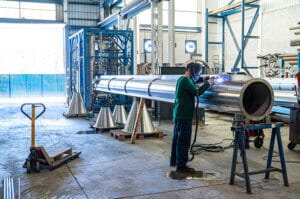 The manufacturing industry is ever-evolving, and there’s been a particular shift that’s picked up steam over the past several years. U.S. and other foreign companies are moving or expanding their operations to Mexico at an increasing rate. They join several of the top global leaders in the manufacturing industry that have benefited from the advantages of nearshoring to Mexico for decades.
The manufacturing industry is ever-evolving, and there’s been a particular shift that’s picked up steam over the past several years. U.S. and other foreign companies are moving or expanding their operations to Mexico at an increasing rate. They join several of the top global leaders in the manufacturing industry that have benefited from the advantages of nearshoring to Mexico for decades.
Despite this increase, navigating post-pandemic shutdowns has left many remaining in a gray area of how best to proceed. However, Mexico continues to be a viable option with minimal risk and optimal reward, particularly when compared with offshoring to China. Here are five reasons companies are nearshoring manufacturing to Mexico as part of their strategic operations.
In early 2021, it was reported the manufacturing skills gap in the U.S. could result in 2.1 million unfulfilled jobs by 2030. Over a million U.S. manufacturing jobs were a casualty of the Covid-19 pandemic and recouping that loss has been slow due to ongoing difficulties attracting and retaining workers in America. Whereas, in Mexico, the availability of highly skilled talent has always been the main driver for companies that need to hire technical talent.
Over 110,00 engineers graduate in Mexico every year. There are incentivized specialized training programs designed to get more people qualified to work in advanced technical industries. Plus, companies can benefit from a young working population; the median age for manufacturing industry employees in Mexico is 27-28. With an emphasis on education and training programs in collaboration with U.S. and other foreign manufacturers operating in Mexico, the level and availability of talent is a consistent resource much needed in today’s industrial environment.
A second reason foreign companies are choosing nearshoring manufacturing to Mexico is competitive costs. This includes everything from labor to tax exemptions to costs associated with shipping times and quality assurance. As an example, per Statista, estimated manufacturing labor costs in Mexico start at $4.82 per hour compared to $6.50 per hour in China and $7.25 per hour in the U.S., which is the current federal minimum wage.
Additionally, Mexico’s maquiladora/IMMEX program offers tax exemption from the 16 percent VAT when importing raw goods, materials, and equipment for the manufacturing process. For companies that choose to operate under a shelter, this offers a significant cost advantage that begins from the first day of operation. These are only two of the many areas of cost-effectiveness when nearshoring to Mexico and working with a shelter, specifically.
A significant advantage for U.S. manufacturers is proximity and location. Rather than operating facilities overseas in China or other Asian countries, many companies can operate on the same time zone and with much easier access when nearshoring to Mexico.
The close proximity of U.S. headquarters and final market destinations to the U.S.-Mexico border results in quicker shipping times and less expensive shipping costs. An operational setup in one of Mexico’s border cities is often able to ship finished goods within 48 hours, if not the same day to their U.S. destination. Whereas, the same type of shipment could take weeks to receive from China and cost thousands of dollars more.
Mexico’s free trade agreements are another incentive that entices foreign manufacturers. Mexico maintains 14 free trade agreements with over 50 countries, including the USMCA with the U.S. and Canada. The USMCA offers protections and provisions for North America trade, such as the rules of origin regarding automotive content and greater intellectual property (IP) protection.
IP protection has been an ongoing challenge between the U.S. and China. With technology quickly evolving, having specialized protections in place are important for manufacturers who wish to develop their products in a foreign country. Since the U.S. and Mexico have maintained a favorable trade relationship, it’s more encouraging for companies that are ready to expand their operations or move them from China.
For decades, China was the go-to source for international trade, particularly for the U.S., mostly because of its cheap labor cost. However, in more recent times, there has been hurdle after hurdle, which has caused companies to rethink their current strategies and future plans.
These problems first started in 2018 with the trade conflict between the U.S. and China that resulted in rising and retaliatory tariffs increasing the costs of operation. Then, the pandemic hit in 2020 and halted the supply chain, which has been slow to resume. U.S. manufacturers saw the negative implications of relying solely on China for outsourced production and have since focused efforts on either diversifying or leaving China altogether and setting up closer to home.
Overall, nearshore manufacturing to Mexico delivers a favorable solution on multiple levels. Significant turning points in the manufacturing industry don’t always happen all at once. They often start small and then gain momentum due to a sequence of events that requires companies to pivot, which is what’s happening at the present moment.
Sources:
https://www.nam.org/2-1-million-manufacturing-jobs-could-go-unfilled-by-2030-13743/?stream=workforce
https://www.statista.com/statistics/744071/manufacturing-labor-costs-per-hour-china-vietnam-mexico/
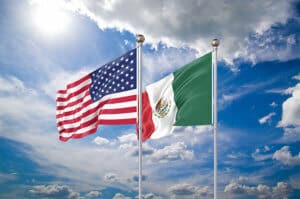 Ally shoring, as defined by the U.S.-Mexico Foundation, is “the process by which countries rework critical supply chains and source essential materials, goods, and services among and between trusted democratic partners and allies, with a focus on investing in the short- and long-term relationships that protect and enhance joint economic and national security.”
Ally shoring, as defined by the U.S.-Mexico Foundation, is “the process by which countries rework critical supply chains and source essential materials, goods, and services among and between trusted democratic partners and allies, with a focus on investing in the short- and long-term relationships that protect and enhance joint economic and national security.”
This term and strategy has recently emerged in the manufacturing industry with the goal of motivating U.S. companies to work solely with trade allies in an attempt to reconfigure and stabilize supply chains. The Covid-19 pandemic resulted in economic shutdowns with supply chains held at a standstill or severely delayed. It became clear how over-reliance on any one country served as a challenge, particularly when that country was on the other side of the world.
Previously, U.S. manufacturers have viewed China as its go-to supply chain due to the low cost of production. This advantage has changed over the years with Chinese labor rates increasing and Mexico’s industrial workforce remaining steady at equal or lower competitive costs. In addition to finding a cost-effective solution closer to home, manufacturers also seek a strategy with higher flexibility and less risk involved. For the U.S., ally shoring to Mexico fulfills the needs of what companies are trending toward today.
In addition to its cost-effective labor rates, the U.S. and Mexico are trade allies bonded by the USMCA. It makes logistical and strategic sense to see the shift of more manufacturing companies taking advantage of the benefits nearshoring to Mexico delivers.
The trade partnership between the U.S. and Mexico has held strong for the past several decades and across multiple industrial sectors. Mexico is the sixth largest global passenger vehicle manufacturer, with 88 percent of vehicles produced in Mexico exported to the U.S. With regards to the aerospace sector, Mexico has grown from 100 manufacturing firms in 2004 to 368 by mid-2020, with an estimated 48 percent of foreign direct investment in 2019. Additionally, Mexico is positioning itself as a high-quality software developer to the aerospace, manufacturing, and finance industries with 38 IT clusters throughout the country.
This is a sampling of how the U.S.-Mexico partnership has positively affected trade and the respective local economies. By capitalizing on the infrastructure and trade relations already in place, plus the implementation of the USCMA and the focus on ally shoring, the number of U.S. manufacturers expanding their operations or setting up new facilities in Mexico is only expected to rise.
In support of ally shoring, one of the main advantages of nearshoring to Mexico is it reduces the dependence on Asian supply chains and makes companies less vulnerable to trade risks, such as retaliatory tariffs and disruptions to the supply chain. With joint production in place between the U.S. and Mexico, ally shoring also fosters creation of industrial-focused jobs in both countries and a way to get new technology and products to market faster and at a more cost-effective rate.
Receiving products of high quality, at a lower cost, with quick delivery are the key factors every business wants to provide their consumers. U.S. manufacturing companies can benefit from the close proximity to the U.S./Mexico border, especially when compared to production in China. Close proximity equals faster delivery and lower costs. This then results in better market satisfaction and more room for customization demands.
Another benefit ally shoring brings to the table is the unique advantage of working with a shelter operation. Shelter operations in Mexico allow foreign manufacturers to get up and running with their production in a timely manner, usually within three to four months.
Furthermore, companies that choose nearshoring to Mexico limit their liability and exposure when partnering with a shelter because they do not have to establish their own entity. A shelter company takes care of all administrative responsibilities, including but not limited to site selection, hiring HR, tax, legal, and customs personnel, and acquiring all the necessary permits and certifications to be in compliance to operate in Mexico.
Lastly, the implementation of the USCMA has only strengthened the advancement of ally shoring due to the specific provisions that incentivize original content production within North America, as well as stronger intellectual property protection.
Ally shoring is mutually beneficial for the U.S. and Mexico and has become a central focus in the manufacturing industry today. Due to the contentious relationship between the U.S. and China first brought on by trade conflict and then heightened by the pandemic, the allyship between the U.S. and Mexico will only continue to grow.
Sources:
https://usmexicofound.org/images/programas/documentos/1614490856AllyShoring.pdf
https://www.trade.gov/country-commercial-guides/mexico-automotive-industry
https://www.trade.gov/country-commercial-guides/mexico-aerospace
https://www.trade.gov/country-commercial-guides/mexico-internet-and-it-services
 Mexico manufacturing includes several benefits, such as lower labor and production costs, access to a skilled industrial workforce, minimized risk through shelter services, and a close proximity to the U.S. However, as with any new operation, it’s important to establish a solid strategy before starting the process to ensure it aligns with your ideal budget, timeline, and goals. Entering the market in Mexico includes but isn’t limited to:
Mexico manufacturing includes several benefits, such as lower labor and production costs, access to a skilled industrial workforce, minimized risk through shelter services, and a close proximity to the U.S. However, as with any new operation, it’s important to establish a solid strategy before starting the process to ensure it aligns with your ideal budget, timeline, and goals. Entering the market in Mexico includes but isn’t limited to:
There are three main ways to meet these requirements and move forward with your manufacturing strategy. Evaluating the pros and cons of each can help you determine which route will be most favorable to you.
When setting up your own standalone entity, you take on the responsibilities of establishing the proper permits, certifications, and compliance measures required when manufacturing in Mexico. This option also involves hiring and training employees, as well as finding the right real estate, and making connections with vendors and supply chain operators.
Pro: Setting up your own entity means you’re responsible for oversight for every part of production, and you’ll run your business using your own legal entity from day one.
Con: Add in potential language, cultural, and timeline barriers and this can seem less cost-effective or efficient than when you first began. Setting up a new legal entity can take up to six to seven months, compared to working with a shelter company, which can take as little as three months to start production.
A second option when establishing your Mexico manufacturing strategy is hiring a contractor or third party to handle setup and fabricate your products in Mexico. Keep in mind, not all contractors provide the same services or the same level or price of services.
Also, typically, under contract manufacturing, you don’t have any control over shipping, quality, production, intellectual property protection, equipment maintenance, etc. You will only receive a finalized product with your name or brand on it. Additionally, you may be working with several different individuals to deliver everything you need to operate.
Pro: Contract manufacturing may be a good option if you need predictable solutions for consistent runs of certain products in the earlier stages of business growth.
Con: Manufacturers are at the mercy of the vendors and give up partial oversight over production quality, scheduling, shipping, equipment maintenance, and everything related to the fabrication of your products. There is also a higher likelihood of missed communication or delayed timelines since you don’t control this operation.
A shelter service company allows the best of both worlds. With this option, U.S. manufacturers retain complete operational control over their production as with a standalone entity. Plus, logistical responsibilities that may be contracted out are coordinated and implemented under the umbrella of an experienced shelter provider. This minimizes the risk and liability of manufacturing in Mexico that companies would otherwise face.
This mode of entry is also highly favorable since the shelter already has the certifications and permits necessary to operate, including the IMMEX maquiladora licensure. Companies operating under the IMMEX program are exempt from 16 percent VAT tax on all temporarily imported goods, materials, and equipment. This is a significant cost advantage that U.S. and other foreign manufacturers benefit from at the initial operating stages.
Read more: Are Mexico shelter services worth the cost?
There are no serious cons to speak of when working with a shelter service company. Shelter services are customized and implemented to align with the goals of each manufacturer. Additionally, a shelter company like IVEMSA sets up manufacturers for success and eventually “graduates” them from the shelter program, if operating as a standalone entity is the end goal.
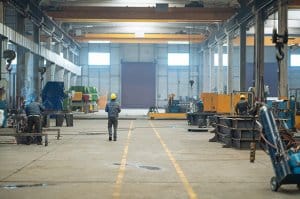 Manufacturers are already well-versed in the ever-changing economic landscape and the complexities of maintaining stability among a global supply chain. 2020 highlighted a growing problem regarding the U.S. reliance on China for manufacturing as supply chains came to a halt. The pandemic created a greater sense of urgency for many manufacturers to diversify their facilities and move operations to Mexico as part of their strategy in 2021 and beyond, with the quest for stability on everyone’s mind.
Manufacturers are already well-versed in the ever-changing economic landscape and the complexities of maintaining stability among a global supply chain. 2020 highlighted a growing problem regarding the U.S. reliance on China for manufacturing as supply chains came to a halt. The pandemic created a greater sense of urgency for many manufacturers to diversify their facilities and move operations to Mexico as part of their strategy in 2021 and beyond, with the quest for stability on everyone’s mind.
At the same time, the final enactment of the newly drafted USMCA went into effect July 1, 2020, making manufacturing in Mexico the favored option for U.S. companies wanting to securely expand their global footprint. Among the many new provisions, the USMCA requires original content, particularly in the automotive industry, be made in North American regions. In addition, there are built-in protections to the trade agreement that protects companies against intellectual property theft, copyright infringement, and other ownership challenges previously faced by U.S. companies when operating in China.
With slow-moving trade negotiations between the U.S. and China, it makes distribution plans unsteady. Furthermore, international travel concerns and supply chain limitations remain in play in a post-pandemic world. The USMCA provides greater incentive for U.S. manufacturers to move operations to Mexico as a way to promote economic stability for the future.
Read more: The rise of nearshoring to Mexico.
Although many companies have included manufacturing in Mexico as part of a strategic solution toward economic stability, it’s a complex process that requires many moving parts to complete successfully. By partnering with a Mexico shelter company, like IVEMSA, foreign manufacturers can benefit from their decades of experience and expertise.
By shouldering the administrative responsibilities required for operational setup, such as HR, accounting, tax and customs compliance, and securing permits and licenses, it allows manufacturers to focus solely on production. It also reduces the learning curve when it comes to navigating international trade and reaping the full benefits of the USMCA and other unique programs, such as the IMMEX maquiladora program and the Section 321 program.
Mexico’s IMMEX maquiladora program is a cost-saving benefit for foreign manufacturers. It exempts the 16 percent value-added tax when temporarily importing goods, materials, and equipment.
Manufacturers can take advantage of this immediately when working under a Mexico shelter company. Additionally, U.S. manufacturers can rely on the supply chain and Mexico shelter service models already in place to manage and meet operational requirements and goals.
Read more: The IMMEX program – a brief overview for manufacturers.
There’s also an added advantage for U.S. manufacturers moving goods from facilities in China to Mexico. The Section 321 Program reduces costs and duties on international goods. The statute refers to de minimis, which “provides admission of articles free of duty and any tax imposed on or by reason of importation, but the aggregate fair retail value in the country of shipment of articles imported by one person on one day and exempted from the payment of duty shall not exceed $800.”
For example, shipping inventory directly from China to Mexico prior to importing it into the U.S. eliminates 100 percent of the duty costs without affecting shipment accuracy or delivery windows. A Mexico shelter company can guide you through the process and ensure you’re in compliance with the regulations set forth by the USMCA and receiving as many of the cost-savings benefits as possible when setting up a new operation.
Source:
https://www.cbp.gov/trade/trade-enforcement/tftea/section-321-programs
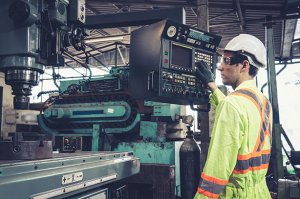 Ally shoring has become a significant part of the manufacturing conversation in recent months following the realities the global pandemic has brought to light. Namely, a shift from the historical U.S. reliance on China for foreign trade. For years, the U.S. has relied heavily on manufacturing in China due to its low-cost labor and production. However, trade conflicts, international travel delays, and halts to supply chains have all led many U.S. manufacturers to consider moving operations closer to home.
Ally shoring has become a significant part of the manufacturing conversation in recent months following the realities the global pandemic has brought to light. Namely, a shift from the historical U.S. reliance on China for foreign trade. For years, the U.S. has relied heavily on manufacturing in China due to its low-cost labor and production. However, trade conflicts, international travel delays, and halts to supply chains have all led many U.S. manufacturers to consider moving operations closer to home.
Ally shoring refers to the process of shifting supply chains and sourcing essential goods and services to trusted allies. The focus is on creating a strong foundation and business relationship to improve economic and national security. Over the past several decades, companies have found manufacturing in Mexico also meets the demand for cost-effective labor and production, plus the added security of supply chain management through an ally bound by the USMCA.
The USMCA offers protections for intellectual property and trademarks in trade relations between the U.S., Mexico, and Canada. It also enacts provisions to protect original content, particularly within the automotive industry, which requires the majority of production to take place in North America.
There are a number of other unique benefits that make ally shoring between the U.S. and Mexico a favorable option compared to China. Proximity and predictability are two key characteristics that stand out when securing and maintaining successful foreign trade operations.
With the majority of U.S. manufacturing facilities so close to the U.S./Mexico border, there’s no question the risk of transit delays is reduced significantly when compared to overseas shipments to and from China. The close proximity also gives U.S. manufacturers greater oversight for quality assurance of their operations, as well as allows them to better respond to demand fluctuations.
As demand for customization from consumers increases, it requires manufacturers to reduce shipping time through multiple warehousing locations and swift delivery times, which makes ally shoring with Mexico another competitive advantage for the U.S. Being geographically closer often means same-day shipping and delivery with less of an environmental footprint required due to lower transportation costs.
Read more: Five benefits of nearshoring to Mexico.
The ongoing trade conflict between the U.S. and China combined with the halt to supply chains and international travel due to the Covid-19 pandemic has left many manufacturers looking for a more secure solution for future strategies. When manufacturing in Mexico, there is greater predictability and reliability of supply chains and resources when compared to China.
Since Mexico is already well-equipped with the type of infrastructure, technology, and cost-effective industrial talent needed for growing manufacturing needs, it provides a strong foundation for manufacturing companies to set up new operations. Many global manufacturers have already invested in Mexico and continue to expand as innovation grows.
Read more: Why nearshoring to Mexico may be more cost-effective than offshoring to China.
Furthermore, with the unique opportunity presented through Mexico shelter services, U.S. manufacturers setting up new operations in Mexico can do so within three to four months versus the six or seven months it could take launching production as a standalone entity. A partnership with a Mexico shelter company minimizes the risk and liability of foreign operators by operating under the shelter’s established entity.
Another value of working under a shelter is that it allows U.S. manufacturers exemption from the 16 percent VAT for all temporarily imported goods and equipment and reduces costs on labor, permits, licensing fees, and infrastructure. In the meantime, manufacturers maintain complete control over production and property throughout the entire process.
The shift of manufacturing from China to Mexico is not a new concept, as companies decide to diversify their portfolios. Mexico simply offers more favorable benefits that China can’t provide.